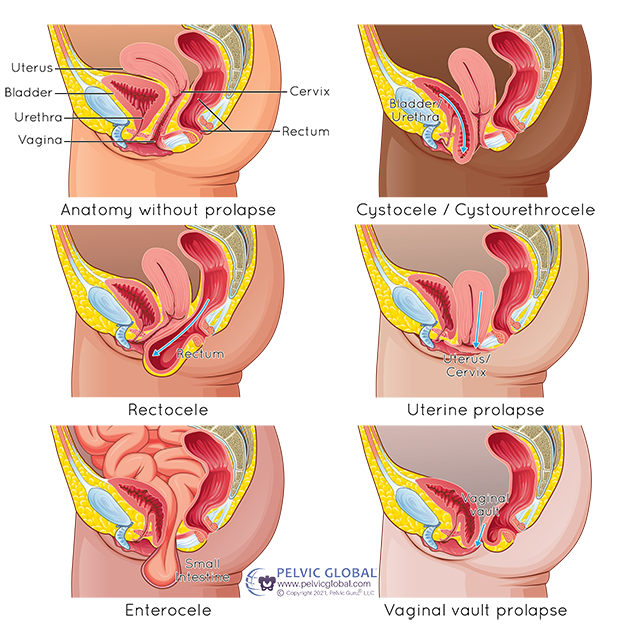Written by Linnea Petersen, DPT
Hello Everyone!
For this month’s blog I would like to speak about the current evidence relating to conservative treatment of patients with Pelvic Organ Prolapse (POP).
What is Pelvic Organ Prolapse?

Pelvic Organ Prolapse occurs when one or more of the pelvic organs such as the uterus, bladder or rectum lose connective tissue support and bulge into the vaginal canal. POP is caused by a combination of impaired tension in the connective tissue and pelvic floor musculature, resulting in overall decreased organ stability.
This can be caused by childbirth, chronic constipation, strenuous work, heavy lifting, obesity, menopause, connective tissue dysfunction or chronic increased intra-abdominal pressure from breath holding. POP is a commonly reported condition in women, with a prevalence range between 1-65% based on whether presence is diagnosed based on symptoms, medical exam or both.
POP can negatively affect quality of life, resulting in decreased participation in daily activities, increased prevalence of incontinence, and decreased sexual function. Review of current evidence lists pelvic floor therapy has been found to be effective to reduce severity of symptoms of prolapse.
In some studies, the evidence reports POP has been shown to improve by 1 stage with completion of pelvic floor therapy. Current evidence also shows more intensive, supervised programs have better results in terms of symptom presentation and POP stage versus less specific programs.
As a result, these are the current clinical recommendations for treatment of pelvic organ prolapse based off of current evidence.
- Provide information about the pelvic floor and evidence for how pelvic floor therapy can help
- Teach proper pelvic floor contraction technique and asses to make sure the contraction is correct with immediate feedback
- Use outcome measures to assess POP symptoms and stage of POP
- Offer individual or group training with physical therapist for at least 6 months with additional home training
- Strength training should follow general principles (3 x 8-12 reps at least 3-4x/wk for at least 4 months)
Seeing a pelvic floor therapist can help meet all clinical recommendations for current treatment of POP, as we evaluate your strength, mobility and management of intraabdominal pressure and provide education on how to appropriately treat you. If you have any questions about treatment of pelvic floor organ prolapse feel free to contact us at CSCM today!
References:
International urogynecology consultation chapter 3 committee 2; conservative treatment of patient with pelvic organ prolapse: Pelvic floor muscle training PMID: 35980443
